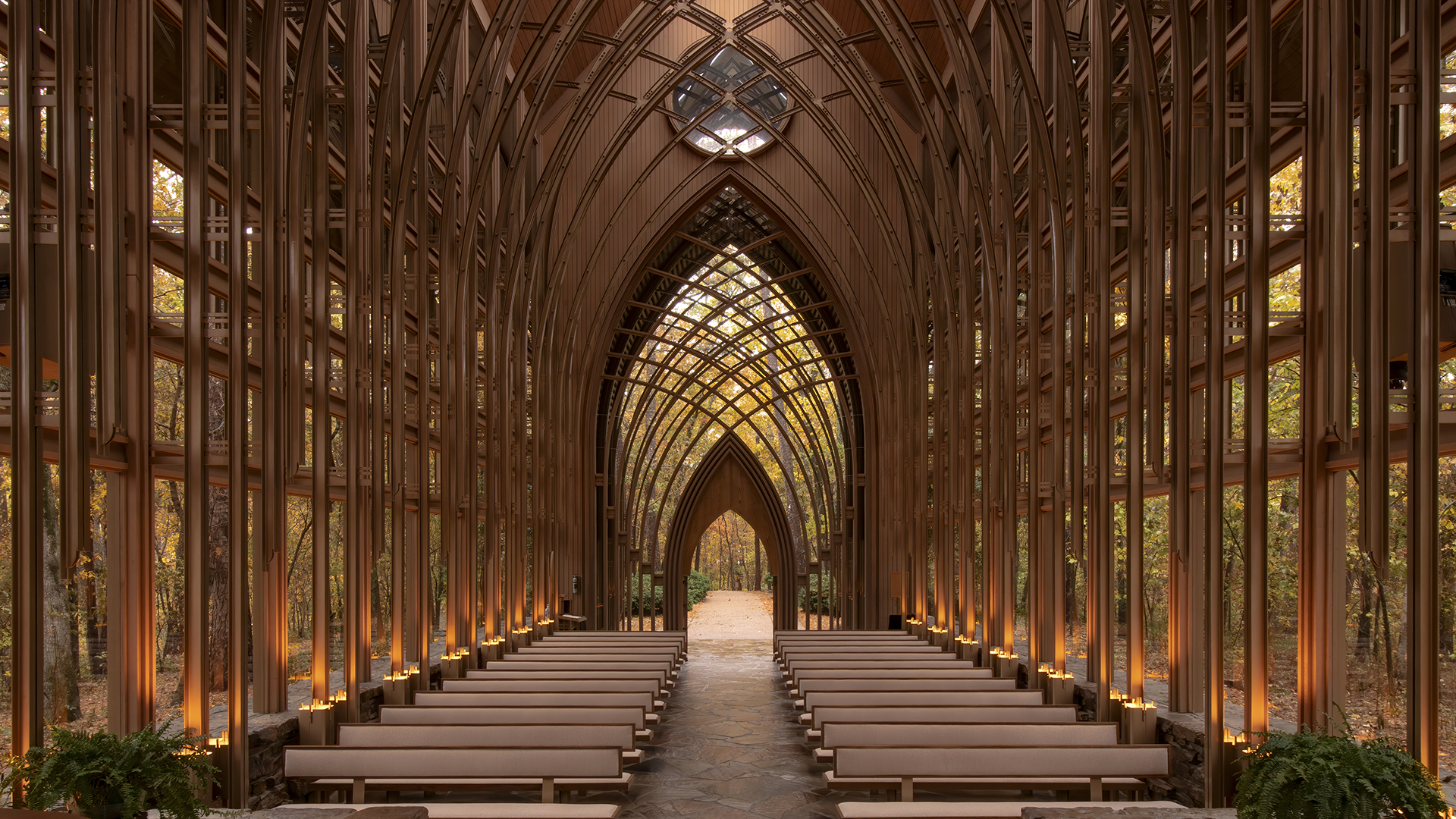Our Mission
Preserve the Work and Legacy of Fay Jones
The Conservancy aims to preserve the work and legacy of Fay Jones through architectural conservation and heritage advocacy. Architectural conservation involves implementing strategies to conserve and restore Jones’ architectural works, ensuring these structures remain true to their original design and condition. Heritage advocacy seeks to achieve recognition for Jones’ works as cultural and historical landmarks. This involves working with local, state, and national heritage organizations to secure protections and raise awareness of the significance of his buildings.
Provide Education and Public Engagement
Education and public engagement are critical for sharing the principles and significance of Jones’ work with a wider audience, fostering appreciation and understanding of his contributions to architecture. The Conservancy will organize guided tours of buildings designed by Jones, with the goal of allowing architecture students, professionals, and the general public to experience projects that might otherwise be unavailable to the public.
Support Owners of Fay Jones Designed Buildings
Owners of buildings designed by Fay Jones face unique challenges in maintaining and preserving these structures. The Conservancy aims to provide critical support through:
Networking and Resources: Creating a network of owners, architects, conservationists, and contractors experienced with Jones’ work. This community would facilitate the exchange of information, advice, and resources, aiding owners in the stewardship of their properties.
Financial Information: Providing suggestions for securing financial resources for preservation projects, including information on grants, tax incentives, and fundraising strategies. This support is crucial for enabling owners to undertake necessary conservation efforts without compromising the architectural integrity of their buildings.
Hunter House, Memphis, TN - Image courtesy Crye-Leike Realtors
“I can only gasp at the magnificence and richness of your interiors. Indeed your living rooms are twentieth century baronial halls; withal so harmonious, broad in concept and delightful in detail, all parts related to the whole. The flow of space, and integration between exterior and interior, is unparalleled.”
- John H. Howe, Architect, Minneapolis, 1976, to Fay Jones


